[This postmortem for Haunt was originally published in the June/July 2012 of Game Developer Magazine. The original text has been restored in full, along with select visuals. To see the article in full, visit the .PDF at the GDC Vault archives.
You can also read a 2011 Haunt pre-launch interview with PaRappa the Rapper co-creator Masaya Matsuura.]
In September 2009, Microsoft Studios approached us at NanaOnSha (Parappa The Rapper, Vib-Ribbon) with a request to make one thing with a wacky, common attraction utilizing its new Kinect motion-control know-how. We put 5 pitches collectively (every extra wild than the final) earlier than they knowledgeable us that they have been most serious about Hang-out, a light-weight hearted first-person journey recreation set in a haunted home. It took us about 9 months to get from that preliminary pitch to signing the venture, by which era the core idea of the sport had modified considerably. And since NanaOn-Sha doesn’t hold any fulltime programmers or artists on the books, we additionally introduced U.Okay.-based improvement studio Zoe Mode onboard to implement the venture. What adopted was a 12-month improvement cycle jam-packed with blood, sweat, and tears not like what any of us had ever skilled earlier than. Was our mission profitable? Effectively, that is dependent upon what standards you decide success by—however there are definitely loads of facets of Hang-out that we will take satisfaction in, and a few actual takeaways to share.

Picture by way of Recreation Developer Journal, June/July 2012.
What went proper
1. Profitable multinational collaboration
With so many events concerned, it was arduous to take care of a coherent imaginative and prescient for Hang-out. In impact, we had three inventive facilities—us in Tokyo, our publishing group in Washington, and the Zoe guys within the U.Okay. One in every of NanaOn-Sha’s guiding philosophies is that with the intention to have video games with cross-cultural attraction, you must have workers from totally different backgrounds (Parappa’s character designer was American, as was the lead programmer for Vib-Ribbon), and this venture definitely match the mould—certainly, it was our most bold but when it comes to multinational collaboration.
In fact, this strategy isn’t with out its downsides. Hang-out’s improvement was something however easy crusing, and we confronted inventive disagreements at each milestone. This will likely sound like extra trouble than it’s value, however we actually consider that inventive conflicts are a good way to tease out distinctive merchandise with that elusive “common” really feel. Additionally, we had been studying plenty of articles about failed collaborations between Japanese and Western studios, so we have been decided to show that when achieved appropriately, a multinational partnership could make a recreation higher.
Wanting on the closing product, we actually really feel that Hang-out comes throughout as a “borderless” title. Hang-out doesn’t really feel particularly Japanese, American, or British, and it has its personal vibe consequently. From the very begin of the venture, we knew that the sport wasn’t realistically focused on the Japanese market, so something overtly Japanese would have been a giant danger. We did truly sound out a number of Japanese studios to collaborate with earlier than selecting Zoe Mode, however we weren’t satisfied that any of the opposite builders might grasp what a Western viewers would anticipate from a “haunted home” expertise. We would have liked our improvement companions to have the ability to synchronize creatively with us in Tokyo and perceive what our U.S. publishing companions would anticipate. Zoe nailed it on its first pitch, which meant that we might give attention to implementation points as a substitute of endlessly debating core philosophies.
From a sensible perspective, there have been a number of issues that helped us pull this off. Initially, we employed a Japanese-English translator who translated virtually all of our electronic mail into every language for the whole venture. This meant workers wouldn’t lag behind on sure points, as a result of they wouldn’t should learn of their second language. Second, we held frequent video conferences, as a result of face-to-face contact helped guarantee refined issues didn’t get misplaced in translation. We additionally visited Zoe Mode every time doable to make an effort to get to know one another and perceive our cultural variations. Lastly, we made positive that we “clicked”—in case you don’t have good chemistry along with your companions, it’s more durable to maintain everybody on a unified course.
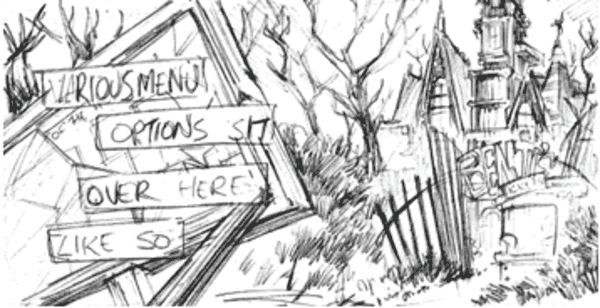
Picture by way of Recreation Developer Journal, June/July 2012.
2. Sturdy navigation system
After we have been pitching the sport to Microsoft, two essential points got here up: the digital camera and the navigation system. We have been fairly assured that for a recreation that depends on environment and spooks, a third-person digital camera simply wouldn’t minimize it. For us, Kinect was a possibility to get gamers nearer to the display screen, experiencing issues firsthand. In case your avatar appears scared while you aren’t scared, it form of spoils the immersion. Navigation was an altogether totally different beast. We ended up with an implementation similar to our preliminary imaginative and prescient, by which the participant makes use of his arm to level his flashlight and pan the display screen, and walks in place to maneuver ahead.
Navigation has been a tough challenge for Kinect, even after 18 months in the marketplace, however we have been satisfied that to ensure that Hang-out to be a spooky, immersive expertise, gamers wanted to bodily drive the in-game motion themselves. Each motion ahead is a step towards a possible scare, and we actually needed gamers to really feel that nervousness, which we felt could be stripped away by any automove options.
Designing and creating a system by which the participant walks in place and factors together with his arms would possibly sound easy, however it ended up dominating Hang-out’s improvement, and took up about 15 p.c of our complete sources.
Microsoft was involved that gamers would discover strolling round corridors a chore, so we tackled this in a couple of other ways. We balanced the parameters so {that a} minimal quantity of motion was essential to drive the participant ahead; we carried out an “autoturn” choice in order that the digital camera would robotically flip round corners, which was rather more sophisticated than it sounds however undoubtedly well worth the effort ultimately; and we elevated the quantity of distractions, resembling small scares and wandering ghosts, to interrupt up the monotony of wandering round empty corridors.
Regardless of all this effort, which we hadn’t deliberate for in our preliminary price range, we have been by no means capable of totally persuade our publishing companions that our navigation system was the very best it may very well be, and each time they noticed a special first-person Kinect title that used different strategies, we might really feel pressured to observe in line. It was a giant danger and a giant inventive judgment name on our half to keep it up, however we really feel that this has been justified by the variety of critiques praising the system in comparison with the equal scorn poured on Hang-out’s friends. Certainly, I’ve but to return throughout a evaluate that knocks Hang-out’s navigation system, and contemplating the widely harsh strategy to reviewing Kinect video games by the standard recreation press, this reward was hard-earned.
3. Aesthetics outlined early
Only one week after we had signed the contract, we have been knowledgeable by Microsoft that Hang-out could be featured on the 2010 Tokyo Recreation Present, which was simply three weeks away—and that we would have liked a video for the announcement. It was a fantastic advertising and marketing alternative that we didn’t wish to move up, however arising with a high-quality video that may be reflective of the ultimate product in simply over two weeks was an actual problem. Nonetheless, it actually served as a catalyst for all of us to outline the aesthetics of the title very early in improvement, and after TGS we seldom had any considerations in regards to the visible type of the sport.
Throughout that interval, we held Skype conferences with Zoe virtually every day. Microsoft needed Hang-out to have a “Disney’s Haunted Mansion” really feel to it, and on condition that transient we tried to forge a visible id that was charming but with a cheeky darkness to it. Our influences included the traditional Italian horror director Mario Bava, Twin Peaks, and Pan’s Labyrinth, which have been all fairly “severe” properties. However we knew that so long as the content material was sufficiently delicate, the sport wouldn’t be too scary for our goal market.
The one drawback to our aesthetic selection was the price. It took plenty of sources to get the visuals to release-quality ranges, and even then the rooms in Hang-out are comparatively naked. We now perceive why most Xbox Stay Arcade titles are 2D or managed perspective 3D; when gamers are taking part in by a first-person perspective, they will’t assist however evaluate you to mainstream retail titles, even when your artwork price range is minuscule by comparability.
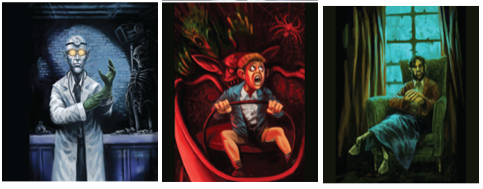
A few of Hang-out’s in-game work. Caption/Picture by way of Recreation Developer Journal, June/July 2012.
4. Modularized strategy to Kinect scanning
By selecting Zoe Mode as our improvement associate, we have been selecting a group with an extended expertise in digital camera video games, on account of their work with Sony’s EyeToy. This turned out to be an enormous benefit. After some early experiments, the tech and design groups decided that with the intention to get probably the most out of Kinect, we should always modularize enter techniques, reasonably than layer them.
Hang-out has only a few events by which you are able to do a couple of interplay concurrently. More often than not, you both do a selected gesture, otherwise you don’t. As quickly as issues get extra sophisticated than this, Kinect will get into slippery territory. Typically the participant will run into false positives, the place the system thinks that the participant has achieved a selected gesture he didn’t do, or false negatives, the place the participant thinks he’s achieved a selected gesture however the system doesn’t register it.
These points tormented us once we developed Main Minor’s Majestic March for Nintendo’s Wii, however we dealt with it significantly better in Hang-out by managing the variety of inputs scanned at anybody time after which doing no matter we might to bolster the outcomes to the participant. The extra plural and complex the gestures are, the extra seemingly false negatives and positives will frustrate gamers. That is made doubly harmful in first-person video games, the place gamers don’t have onscreen avatars to visually synchronize their actions with.
The one main exception to this in Hang-out is navigation; the system concurrently screens toes and knees (to maneuver gamers ahead) and arms (to level the flashlight and entry the Xbox Information). These actions are mapped to totally different halves of the physique, so we might deal with them as separate modules as a substitute of layering them and counting on the system to differentiate them.
Kinect is a paradox. It’s labeled a “pure person interface,” however many points stop most concepts from being carried out in a simple method. We needed to do every kind of hacks to make issues really feel pure, or as near pure as doable, and taking this modular strategy meant that we have been capable of take a look at them in isolation.
Issues that may smash your wonderful Kinect thought could stem from technical, cognitive, or cultural points. Our technical points typically concerned balancing lag and smoothing—Kinect’s skeleton monitoring jitters closely, however the extra you easy it out, the extra lag you get—and inaccuracy (the false positives drawback talked about earlier, in addition to the big proportion of gamers who don’t calibrate their Kinect correctly). Cognitive points got here up when Kinect was unable to map issues one hundred pc to the actual world equivalents on account of numerous limitations—resembling the truth that you’ll be able to’t stroll ahead a lot when taking part in Kinect since you’ll run into the TV. Our hack was to have gamers stroll in place, however as this isn’t a 1-to-1 implementation, gamers are certain to expertise some cognitive confusion.
Lastly, there are cultural points; gamers can interpret issues in numerous methods. We discovered that many American gamers needed to carry out strolling with minimal effort, with tiny real-world footsteps amounting to giant game-world footsteps, so we carried out the minimal footstep peak doable given Kinect’s granular accuracy. If the space is just too small, we’d get false positives, and the digital camera would transfer ahead within the recreation even when gamers have been standing nonetheless. By the center of the venture we have been fairly savvy about Kinect’s capabilities, and we might get rid of concepts that sounded nice on paper however would have been crippled by its limitations.
Sooner or later, applied sciences like Kinect will (hopefully) grow to be extra correct and dependable; from a participant’s perspective, there’s an enormous distinction between 90 p.c reliability and 99 p.c. If that occurs, recreation builders will likely be free to create extra action-oriented, high-octane experiences.
However for a spooky recreation like Hang-out, which inspires gradual, deliberate actions, the present know-how was a enough match.
5. And introducing…Tim Schafer
Wanting on the legacy of NanaOn-Sha titles, one in every of our hallmarks is the best way we use voice expertise. For the Parappa titles, we used musicians, not actors, to voice the characters. Their performances have been by no means going to win any Academy Awards, however their flat deliveries had a sure appeal— and the character fashions in Parappa have been technically flat, too!
For Hang-out’s vertical slice stage, we have been utilizing the associate of a Zoe staffer to voice our recreation’s solely talking character, mansion proprietor Benjamin Muldoon. The actor was very gifted, and gave a thespian, ultra-English efficiency with some gusto that many on the dev group have been fairly pleased with.
Nonetheless, for NanaOn-Sha founder Masaya Matsuura and me, one thing wasn’t fairly proper. Benjamin Muldoon—or “Benjy,” as we known as him—is a grubby outdated geezer who got here to riches by surreptitious means. And he’s trapped inside a portray. He has deliberately crude animations—his mouth flaps open and his pupils roll, very similar to a Terry Gilliam speaking head in Monty Python. It was fairly tacky, and we beloved it. Sadly, the crude, flat Benjy character simply didn’t match the hyper-animated efficiency of our thespian buddy, however we weren’t positive what to do till in the future, once we have been speaking with (Double Tremendous founder) Tim Schafer at a GDC social gathering in 2011.
Tim invited us on a tour of Double Tremendous’s studio the following day, and after the social gathering I recommended the notion to Matsuura of Tim taking part in the a part of Benjy for Hang-out. He beloved the concept, and it actually appeared like a NanaOnSha factor to do. After the tour the following day, we popped the query to Tim, and after some moments of untamed, internal panic, he mentioned “Positive! Fuck it. Let’s do it!” and we by no means regarded again.
We’re very proud of Tim’s voiceover—his dry, flat efficiency is an ideal match to the 2D portray his character inhabits. However it was an actual problem to get the efficiency excellent; working with nonprofessionals requires that you simply focus the workload on their strengths and decrease the weaknesses.
The very first thing we did was enable Tim to rewrite the voiceover script. The unique was written by British recreation designers (myself included), so with the intention to get a natural-sounding efficiency, we knew the script needed to be in his voice. He wasn’t required to do any accent or place his vocabulary in a sure time or place. It was one hundred pc Tim, with the liberty to tackle Benjy’s malevolent mindset—which he tackled with relish.
The second key aspect is that we needed to do a few re-recordings—Tim would tire because the day went on, and the extra we tried to persuade him into tapping into extra power, the extra drained his performances grew to become. Doing re-recordings not solely gave him an opportunity to re-energize but in addition allowed us to verify the strains in isolation and weed out required pickups (of which there have been lots!).
Third, we discovered that the recordings went significantly better when somebody one hundred pc aware of the sport was capable of attend the session and provides some course. This isn’t straightforward on an XBLA price range when 5,000 miles separate events, however we managed to time a session to coincide with E3, which was really value its weight in gold.
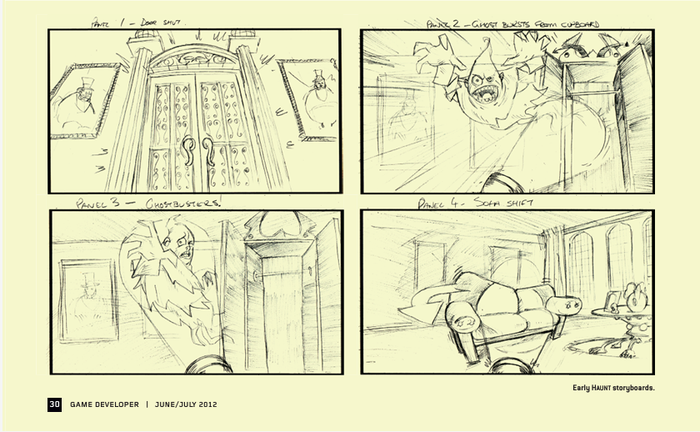
Picture by way of Recreation Developer Journal, June/July 2012.
What went mistaken
1. Flawed communications pipeline
There was one level of contact at Microsoft, Zoe Mode, and NanaOn-Sha, and usually this labored effectively. Having one level of contact helps to focus discussions, however generally it could clog up improvement.
We’d get suggestions from our writer’s top-level administration, however by the point it had reached the coder or artist liable for the implementation, it could have gone by as much as 5 middlemen. This led to a sense that the suggestions was virtually an order, reasonably than a suggestion or subject for debate. Within the different course, once we needed to clarify sure contentious improvement selections—resembling our selection of navigation system—we have been by no means actually capable of take full management of the problem, and subsequently no events ever felt happy.
This was compounded by a number of administration adjustments on the writer throughout improvement, a lot of whom we by no means had a possibility to satisfy with, communicate to, and even electronic mail straight. We needed to re-justify our navigation system selections a number of occasions throughout improvement, however even then we might inform that the highest brass weren’t happy. Having to repeatedly make the identical arguments proved to be an actual distraction, and there was an actual sense of frustration and helplessness about not with the ability to management our imaginative and prescient. We must always actually have flown to the writer HQ to speak our imaginative and prescient and keenness for the venture and simply hammer out these variations, however ultimately we by no means visited and as a substitute these troubles festered all through the latter half of improvement.
Our failure to resolve these differing opinions on the navigation system actually shook the writer’s confidence within the venture, which ruined any probability we had of getting advertising and marketing help at launch.
2. Survival by a thousand cuts
After we first pitched our initiatives to Microsoft in 2009, we didn’t distinguish between retail and XBLA. Microsoft favored our idea for Hang-out and recommended that we pitch it as an XBLA title. The issue was that our preliminary Hang-out pitch was envisaged as a title targeted round user-generated content material, with gamers creating their very own haunted homes, doing their very own monster animations by way of movement seize, and so forth.
By the point the venture was signed, we’d scaled this down massively however have been nonetheless promising “limitless replayability” as one in every of our core pillars as a legacy of that preliminary idea. Half manner by manufacturing we have been compelled to chop that pillar, and the tip product options virtually no replay worth by any means. We minimize tons of things from our burn checklist at a number of factors, because it was the one manner we might hit the standard bar with the sources obtainable.
This was a serious letdown, and most critiques particularly level out that Hang-out is a brief expertise with low replayability, which has price us some Metacritic factors for positive. On the time, we have been hoping that video games resembling Limbo had made the prospect of quality-over-quantity titles extra acceptable, however this ended up not being the case for us.
From the beginning, we have been dedicated to utilizing Kinect not as a device to emulate Wii social gathering video games however as a technique to carry the gamers into deeper experiences. For Kinect titles, the place a major quantity of sources will likely be spent on refining the enter strategies, maybe this “deeper” kind is best off for retail titles, as a result of on our restricted XBLA price range, we discovered that three hours of high quality left us with zero room for replayable options.
Maybe the one factor saving Hang-out from utter catastrophe was Zoe Mode’s use of Scrum. All through improvement we have been capable of quickly reprioritize our focus and iterate on issues till they felt proper. The scope saved on dropping, however the high quality remained excessive.
I might undoubtedly recommend that any dev group embarking on its first Kinect venture plan to at the least double the standard contingency into its price range. There’s no avoiding the truth that to make an thought work with Kinect, every kind of tweaks and workarounds will likely be required. With a view to make room for this we had no choice to chop, minimize, and minimize once more.
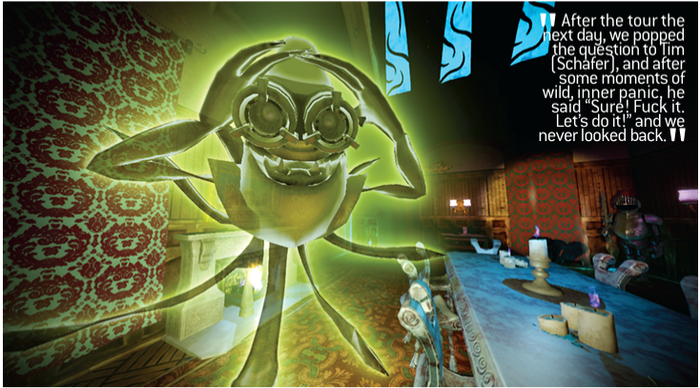
Picture by way of Recreation Developer Journal, June/July 2012.
3. Transferring goalposts and goal market confusion
Hang-out was one thing of an experiment on a number of fronts. It was initially a part of an initiative to get Japanese creators concerned with Kinect, however our particular transient was significantly wider. As was the case with Parappa, Microsoft hoped that Hang-out could be a title that appealed to each core and informal avid gamers.
Throughout improvement, the first focus shifted like disturbed tectonic plates. On the preliminary pitching part the objective was clear—get informal Kinect homeowners to “dip in” to XBLA—however at kickoff, with the intention to slot in with Microsoft’s keynote theme for Tokyo Recreation Present 2010, we have been introduced as one in every of a batch of titles meant to attraction to “core” avid gamers.
It was by no means clear which group we should always particularly goal, so we did our greatest to attraction to each, and we ended up making Hang-out simpler than core avid gamers most popular. Having mentioned that, we’re fairly comfortable that the sport does certainly have “common attraction,” however upon releasing the title, it was evident that XBLA was really the area of core customers. Ought to Hang-out have been focused extra at these core customers? Ought to it have been a retail title and marketed particularly to the mainstream? We by no means actually addressed these points by the point the sport shipped. As a substitute, we have been hoping that the sport would create a brand new market, however we hadn’t achieved any spadework to create that area of interest.
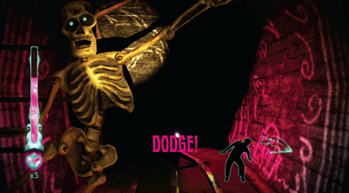
Picture by way of Recreation Developer Journal, June/July 2012.
4. Nonexistent advertising and marketing and neighborhood administration
At NanaOn-Sha, we don’t have any aspirations to self-publish. We give attention to making video games, and we’re comfortable to let our publishing companions maintain advertising and marketing and neighborhood facets.
Hang-out wasn’t particularly envisioned as an XBLA title, and we by no means actually tailored our mindset to creating an XBLA recreation. Microsoft instructed us on a few events throughout improvement that it wasn’t liable for advertising and marketing XBLA titles, however I don’t assume we ever totally took that to coronary heart. The truth that simply weeks into the venture we have been being showcased at TGS maybe gave us the impression that there was truly room for some advertising and marketing help, however to be brutally trustworthy, Hang-out light virtually utterly out of the general public thoughts after that preliminary displaying.
I’m undecided if individuals within the West are actually conscious of this, however it’s very troublesome to achieve mindshare within the West from an workplace in Tokyo. Out of sight, out of thoughts. Hang-out was by no means actually part of the dialog within the Western press. Our solely actual probability to recapture some mindshare was TGS 2011, however we bungled the chance. Not solely was this TGS notable for its shortage of Western press, however we had solely a single sales space that we needed to share with two different titles, and more often than not, it didn’t actually have a Hang-out signal. Moreover, our demo featured a stage from the center of the sport that was too troublesome for newcomers, and the environment of the title was drowned out by the din and obtrusive lights of the present flooring.
General, we have been semi-aware that advertising and marketing was form of our duty, however plenty of points stopped us from actually tackling it. We had no in-house experience on this space, and all of us most popular to spend our time making video games. Additionally, we hadn’t budgeted for it, so we couldn’t afford to herald any specialist sources to assist. Lastly, any advertising and marketing that we needed to do needed to be vetted by the writer. Put all these collectively and we had a real heads-in-the-sand challenge that actually got here to chew us when the sport was ultimately launched.
5. Poor use of usability testing
Usability testing and playtesting is significant while you’re working with one thing as analogous as Kinect. The way you initially envision the sport, the way it’s carried out, how Kinect reads gamers, and the way gamers understand what they’re doing is all a part of an opaque recreation of phone by which you’ll inevitably should make tweaks and additions to make the sport as user-friendly as doable.
Sadly for us, our makes an attempt at usability and playtesting have been too few, typically flawed, and sometimes detrimental.
Our first usability session got here after we produced our vertical slice fi ve months into the venture. It passed off in Washington, and not one of the dev group have been capable of attend, which was an actual disgrace, as a result of sure issues arose that we didn’t anticipate. We didn’t instruct the session supervisor to calibrate the Kinect sensor earlier than the session, so the Kinect mic didn’t register any sounds by the participant, which broke elements of the extent. It was so irritating to observe the movies and be unable to do something about it. However we took what classes we might from the expertise.
Maybe the largest lesson from this session was that you simply can’t take as a right gamers’ understanding of textual content prompts within the recreation. Some have been interpreted in methods we might by no means have imagined; one of many assault gestures is labeled “thrust,” that means gamers ought to stab on the ghost to hit it, however one participant interpreted it as a pelvic thrust! You’ll be able to think about this challenge worsening as soon as it was localized, so to hedge the issue we included 3D arrows indicating course of motion for all gestures. Even with this, some gamers have been nonetheless performing surprising gestures, so we additionally added bodypose silhouettes the place we might. Ideally we’d have animated these for max readability, however it was past our scope.
After that usability session, we brushed ourselves off and thought, “By no means thoughts, we’ll be extra thorough in our preparations for the following one.” Sadly, that was to be our fi rst and final true usability session of the whole venture. We have been unable to safe additional entry to the usability group, so ultimately we resorted to doing impromptu classes ourselves utilizing workers, buddies, and household. It was higher than nothing, however by the point we acquired round to this, there wasn’t actually sufficient time to make adjustments based mostly on the outcomes.
Throughout the identical interval, in lieu of any true usability or playtesting, we acquired occasional suggestions from assorted Microsoft workers in Redmond, however it by no means appeared to correlate with our personal information. In the long run, usability ended up turning into a political device for our debates on the navigation system, when it could have been much more helpful to give attention to the trivia of the sport to enhance the moment-to-moment expertise.
A haunting expertise
From a purely egocentric perspective, we’re fairly proud of Hang-out. We managed to launch a captivating title, with a singular management scheme and a memorable voiceover, and we did all of it in only one 12 months.
Our greatest mistake was a failure to persuade our consumer that the ultimate product was worthy of promoting help, and our incapacity to compensate after they didn’t come to that conclusion themselves. Now that the product has been in the marketplace for a couple of months, and the Metacritic rating is relatively excessive for a Kinect title, we’re beginning to see these reservations thaw. The following step will likely be to speak about the place Hang-out suits within the general technique, as a result of as a digital title, there’s nonetheless loads of time for promotions, and a few publicity round Halloween might nonetheless reap some dividends.
Any title that’s distinctive—and doesn’t match logically into your consumer’s portfolio technique—will at all times be a danger, and solely the shoppers can determine the result of Hang-out’s future. Within the meantime, I’m sure that NanaOn-Sha will proceed to make revolutionary, trend-bucking video video games. In spite of everything, that’s what publishers at all times ask us for!



